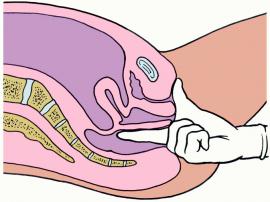Diseases of the colon
Diseases of the colon are not rare nowadays. On average, out of every thousand of adults 287 people are affected by various coloproctological diseases. About 1/3 of patients who have simultaneously two or more of the disease . Men and women suffer from these diseases equally.
Complaints of discomfort in the anal area, abnormal discharge from the rectum (mucus, blood), various gastrointestinal complaints (diarrhea or constipation, tenesmus) are the basis for proctology examination. These symptoms should never be ignored or assign patients symptomatic treatment antispasmodics, analgesics, hemorrhoids candles without performing proctology examination.
Polyps of the colon
Neoplasms (benign and malignant tumor) of the rectum - the basic pathology, for the correction of which is used transanal operating machinery. The uniqueness of this disease among all other types of cancer - is clearly traceable the development from of precancerous state to the actual cancer.
The presence of a polyp is an indication for removal. Relatively small or large polyps with a pronounced leg relatively easy to remove by noose electroscission, or electrocoagulation during sigmoidoscopy or fibrocolonoscopy.
Surgical treatment of rectal prolapse
All methods of elimination rectal prolapse can be divided into two groups: transperitoneal and Transanal. Minimal trauma, rapid recovery of body functions after the operation, the relative ease of mobilization and fixation of the rectum did laparoscopic posterolateral rectopexy as standard procedure in the correction of prolapse.
Surgical treatment of rectal prolapse, not only eliminates the anatomical disturbances in the pelvic area, but also helps in the correction of functional disorders of the colon and rectum: eliminates constipation, improving function retention of feces, etc.
If necessary, patients with slow constipation conducted resection of the sigmoid colon by a standard laparoscopic procedure with hardware anastomosis.
It is important to remember that the specificity of each operation must be determined by taking into account the state and totality all the pathological changes in each patient. Elderly patients with a high degree of operational and anesthetic risk are best treated by perineal operations that can be performed under regional anesthesia or under local anesthesia with intravenous sedation. Young patients can easily transfer laparoscopic rectopexy with or without synchronous resection of the sigmoid colon under general anesthesia.
hide
 Colon Surgery & Rectal Surgery is a special section of General and Visceral Surgery, engaged in treatment of benign, malignant and inflammatory diseases of the small and large intestines, and rectum.
Colon Surgery & Rectal Surgery is a special section of General and Visceral Surgery, engaged in treatment of benign, malignant and inflammatory diseases of the small and large intestines, and rectum. 






